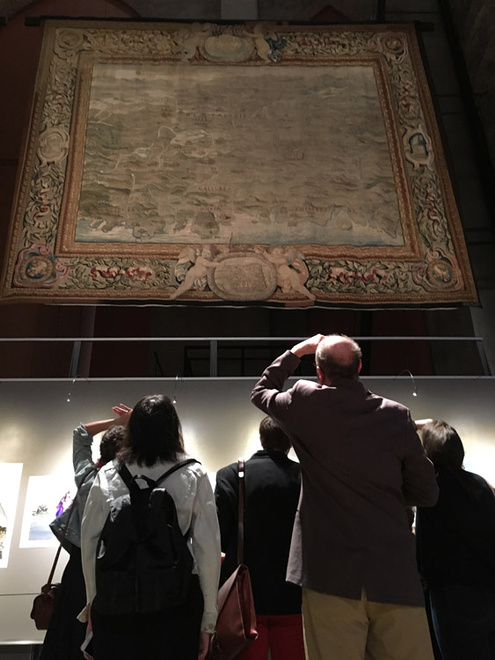
On October 6, I and my students in the seminar “Damage, Decay, Conservation,” supported by the Andrew W. Mellon Foundation funded initiative “Cultures of Conservation,” visited the Tapestry Laboratory of the Cathedral of St. John the Divine. Professor Jeffrey Collins accompanied us, contributing his extensive knowledge of Baroque textiles. We were the guests of the director of the laboratory, Marlene Eidelheit. She and her colleagues are conducting the long-term conservation of a spectacular series of Roman tapestries after cartoons by Giovanni Francesco Romanelli representing episodes from the life of Christ. The twelve unique tapestries were commissioned in 1643 by Cardinal Francesco Barberini, the nephew of Pope Urban VIII and were given to the cathedral in 1891. The Transfiguration is currently undergoing treatment to strengthen it as it hangs. We were able to examine it up close and learn about the mechanical stresses that affect such a heavy textile made of both silken and woolen threads. Ms. Eidelheit also showed us other works being treated, helping us to consider “matter out of place”—dirt—in relation to them, notably a matador’s costume elaborately decorated with gilded frogging.
Such visits give students the opportunity to see conservation treatments in progress, to discuss them with conservators, and to ask searching questions. This was one of four conservation laboratory visits I have arranged thanks to Mellon Foundation support, the others being to the laboratories at the Museum of Modern Art, the Metropolitan Museum of Art, and the American Museum of Natural History. The host conservators are invaluable collaborators in our endeavor to foster links between members of their profession and emerging scholars in the decorative arts, design history, and material culture.
- Professor Ivan Gaskell